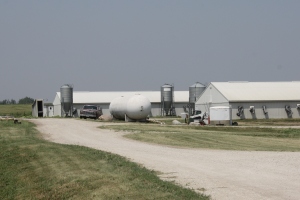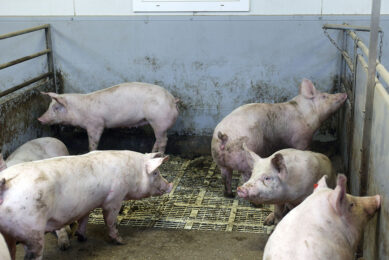RESEARCH: Ammonia emission assessment of US swine facilities

With regard to ammonia emission on swine farms, the United States need better data collection, analysis and modelling. Scientists write that this is necessary to achieve better environmental policy.
Ammonia (NH3) emitted from animal agriculture is the most important gaseous pollutant in agro-systems. Experimental research, as compared with indirect estimation and hypothetical calculation, on NH3 from agriculture is critical for emission assessment, regulation and abatement.
Research involving field-scale monitoring of NH3 emissions from US swine facilities has greatly expanded in the past 15 years. However, published NH3 calculation tools, including emission factors, and US EPA (United States Environmental Protection Agency) inventories in this field were largely based on non-US research.
Seasonal and diurnal variations
While seasonal and diurnal variations of NH3 concentrations and emissions are acknowledged, most field studies, which these tools depended on, produced data that only represented a fraction of the overall picture of NH3 emissions because of technological and financial limitations. Different methodologies and technologies have been used in NH3 emission investigations but not compared systematically. Methodology, equipment, and software used in sampling and measurement, and methodology and software used in data processing and emission rate calculation can introduce variations into the results. Because of the lack of standardised methods and procedures, it is difficult to identify and quantify measurement and calculation errors.
Although a few comprehensive field studies have been conducted that were long enough to cover seasonal and even annual variations, and continuous enough to cover diurnal and dynamic emission variations, there is a considerable delay of in-depth interpretation and publication of data following comprehensive monitoring projects in the US. There is also a lag of adopting/updating the latest NH3 emission factors from comprehensive field studies in country-wide NH3 emission inventories. In addition, there have been discrepancies between data obtained from research and data published by governmental and other agencies.
Future development
Future development in this field will require that methodologies and criteria be made to weigh data from different projects to develop emission factors, more emphasis be put on application of comprehensive research results, more intensive and extensive field monitoring be conducted, standards and protocols for monitoring and data calculation be developed, and more investment be made on post-measurement data processing/ analysing/ interpretation and development of advanced computer software.
Source: Environmental Science and Policy
 Beheer
Beheer








 WP Admin
WP Admin  Bewerk bericht
Bewerk bericht